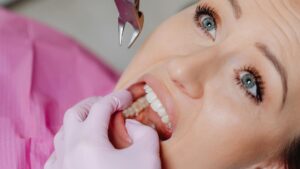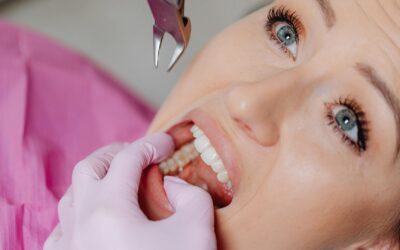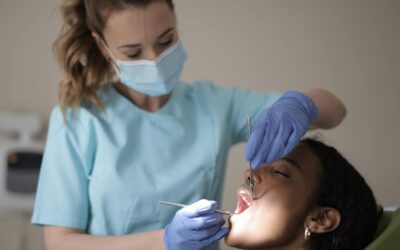Tooth extraction is a routine dental procedure, but your real journey begins after the tooth is removed. Recognizing the signs of a normal socket after tooth extraction is essential to ensuring proper healing and avoiding complications like dry socket. Whether it’s day 2, day 3, or day 7, knowing what to expect during the wound healing process can offer peace of mind and keep your recovery on track.
🦷 Note: A normal socket heals steadily over time. Persistent or worsening pain is not part of normal healing—seek dental advice if this occurs.
What Does a Normal Socket Look Like?

After a tooth is removed, a socket (hole in the bone and gum) is left behind. A blood clot forms at the site, initiating the body’s natural tissue healing process. This clot is crucial as it protects the underlying bone and nerve endings.
Common features of a healthy, normal socket:
- Presence of a dark clot or white film (granulation tissue)
- Decreasing pain and swelling
- Absence of foul odors or bad taste
- No exposed bone or empty-looking hole
The healing normal socket after tooth extraction is your body’s way of sealing the wound, regenerating soft tissue, and eventually filling the socket with new bone.
Normal Socket Healing Timeline: What to Expect
Day 2: Normal Socket After Tooth Extraction
- Clot is intact, dark red or brown
- Mild swelling and discomfort
- Slight oozing or bleeding may still occur
- Avoid touching the area or rinsing vigorously
Day 3: Healing Normal Socket After Tooth Extraction
- Pain is noticeably reduced
- Socket may look whitish due to new tissue formation
- No signs of infection or dry socket
- Swelling continues to decrease
Day 7: Healing Normal Socket After Tooth Extraction
- Clot may be partially dissolved and replaced by granulation tissue
- Gum edges may begin to close in
- Minimal to no discomfort
- Eating and drinking are easier, but caution is still necessary
💡 Helpful Tip: If you experience intense pain or notice an empty socket by day 3 or 4, contact your dentist immediately—it could be a dry socket.
The Wound Healing Process: Step by Step
The normal healing stages after tooth extraction follow a logical biological process:
- Hemostasis (0–24 hours): Clot forms to stop bleeding.
- Inflammation (1–3 days): Body clears bacteria and debris; mild pain and swelling occur.
- Proliferation (3–7 days): Tissue regeneration begins; granulation tissue forms.
- Maturation (1–2 weeks to months): Gums close, and bone fills the socket over time.
Tissue healing in a normal socket can take several weeks, while bone remodeling may take a few months.
Eating During the Healing Process
Your diet plays a major role in the success of your recovery. Knowing what to eat after a tooth extraction can help protect the clot and promote tissue regeneration, while avoiding foods that might harm the healing socket.
What to Eat (Especially in the First 7 Days):
- Day 1–2:
- Cold or lukewarm soft foods: yogurt, applesauce, pudding
- Hydrating liquids: water, electrolyte drinks
- Avoid hot foods which can dissolve the clot
- Day 3–5:
- Soft, warm foods: mashed potatoes, scrambled eggs, smoothies (no straw!)
- Soft-cooked veggies and oatmeal
- Day 6–7:
- Add slightly firmer foods: pasta, tender fish, soft rice
- Begin chewing away from the extraction site
Foods to Avoid Until Fully Healed:
- Crunchy snacks (chips, nuts, popcorn)
- Sticky or chewy foods (candies, gum)
- Spicy or acidic dishes (may irritate the socket)
- Straws – the suction can dislodge the clot and lead to a dry normal socket after tooth extraction
🚫 Pro Tip: Alcohol and smoking delay healing and increase the risk of dry socket. Avoid them completely during the first 7–10 days.
Dry Socket vs Normal Socket: Spotting the Difference
| Feature | Normal Socket | Dry Socket |
|---|---|---|
| Pain | Mild to moderate, decreasing | Severe, sharp, radiating to ear/jaw |
| Appearance | Clot visible or white tissue | Empty socket, exposed bone |
| Odor | Neutral or none | Foul-smelling |
| Taste | Normal or metallic early on | Bad taste, bitter |
| Healing Progress | Steady improvement | Pain worsens after initial relief |
How to Support Normal Socket Healing
To keep the healing process on track, follow these dentist-recommended tips:
- Rest and limit physical activity for the first 24–48 hours
- Use ice packs for swelling
- Take prescribed medications as directed
- Gently rinse with salt water starting Day 2
- Sleep with your head elevated to reduce bleeding and swelling
🛏️ Reminder: Stick to soft foods, good hygiene, and no smoking to give your body the best chance at fast and clean healing.
When to See a Dentist
Seek immediate care if you experience:
- Sharp, throbbing pain after initial improvement
- No visible clot or empty-looking socket
- Fever or chills
- Swollen jaw or pus drainage
- Bad breath that worsens after Day 3
FAQs
How long does it take for a socket to close after tooth removal?
Soft tissue usually closes within 1–2 weeks, while bone healing may take 2–3 months.
Is it normal for the socket to look white during healing?
Yes. That’s granulation tissue, a sign that the tissue healing process is progressing well.
Can I eat solid food after 1 week?
Yes, as long as it’s not crunchy or hard and you chew away from the socket. Always listen to your body and your dentist.
What are the first signs of healing after a tooth extraction?
The earliest signs of healing include reduced bleeding, formation of a blood clot, and mild swelling or soreness that gradually improves. By day 2–3, you may notice white or pale tissue forming over the socket, which is granulation tissue—a healthy part of the healing process.
Can I brush my teeth near the extraction site?
Yes, but with caution. You can gently brush your teeth the next day, avoiding direct contact with the extraction site for the first few days. Instead, rinse with salt water after 24 hours to keep the area clean without disturbing the blood clot.
Final Words
Understanding the signs of a healing normal socket after tooth extraction helps reduce anxiety and ensures timely action if something feels off. The formation and maintenance of a blood clot is critical, and you should see daily improvement in pain, swelling, and function.
As long as you’re following aftercare advice and pain is decreasing (not increasing), you’re likely healing well. But don’t hesitate to reach out to your dentist if you have any concerns—it’s always better to be safe than sorry.
Disclaimer: The content provided in this article is for educational and informational purposes only. It does not substitute professional medical advice, diagnosis, or treatment. For guidance specific to your dental condition or recovery, please consult your dentist, oral surgeon, or licensed healthcare provider.










0 Comments